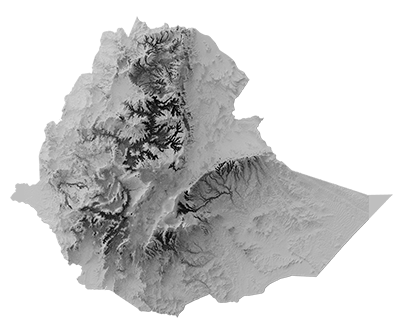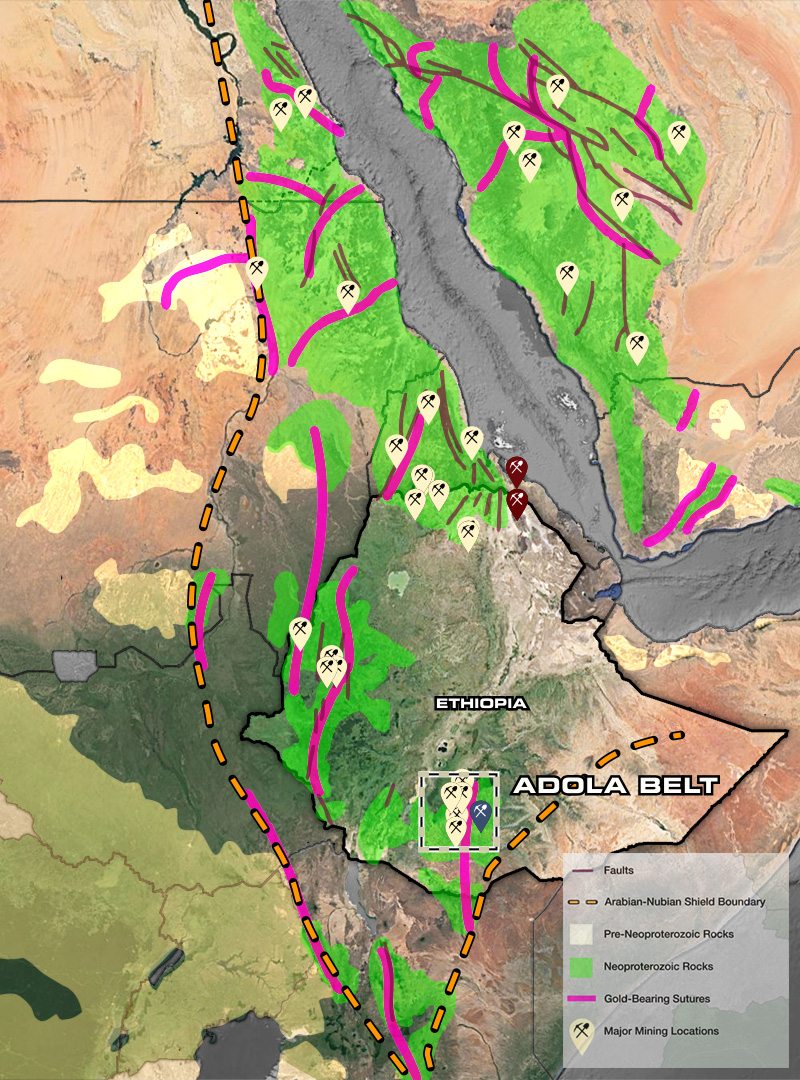Mining in Ethiopia
Ethiopia is a highly prospective geological region, containing a world-class greenstone geological terrain and hosts the southern area of the prolific Arabian-Nubian Shield, a large region of covering parts of Saudi Arabia, Yemen, Egypt, Sudan, Eritrea, Ethiopia, and Kenya.
In comparison to other geological regions, Ethiopia is significantly under-explored, with minimal modern and systematic exploration applied historically.
The exploitation of placer gold in Ethiopia dates back at least 3,500 years and large quantities of gold have been produced to date, chiefly from placer deposits. Mineral exploration began in the late 1890s by international mining companies, however modern mineral exploration only started in 1968.
The Adola Gold Belt sits within the Arabian-Nubian Shield and is comprised of both the Megado and Kenticha belts. The Adola Gold Belt was prospected between 1979-1982 by the Ethiopian Mineral Resources Development Corporation for the Adola Gold Exploration Project. During this time, a number of primary and placer gold targets, as well as other mineral occurrences were identified, including the Lega Dembi and Sakaro primary gold deposits in the Megado belt.
- Ethiopia’s only primary gold mines are Lega Dembi and Sakaro, both are located in southern Ethiopia in the Adola Gold Belt.
- Since commencing operations in 1998, Lega Dembi has produced 2.1 million ounces of gold. The remaining gold resource is estimated at 2.5 million ounces.
- Sakaro was designed as high-grade fill for Lega Dembi and has a current gold resource of 708,770 ounces at 14.14 g/t.
- The Adola Gold Belt also hosts the Kenticha tantalum lithium mine which has produced 120,000 tonnes of tantalum pentoxide and has a significant hard rock lithium deposit.
- A number of other gold projects have reached advanced stages of exploration and are heading towards development, including Tulu Kapi, Dish and Jilaye (in western Ethiopia) and Meli (in northern Ethiopia).






